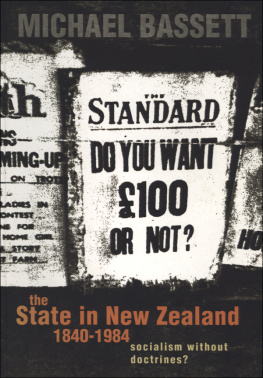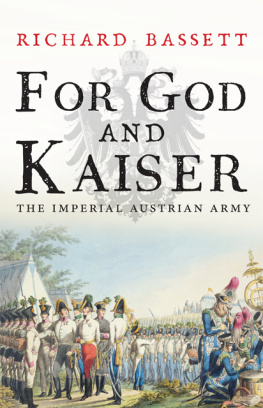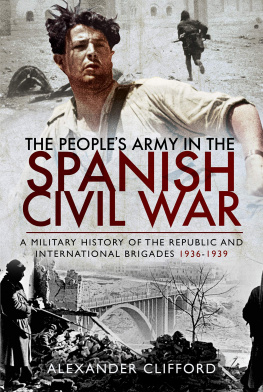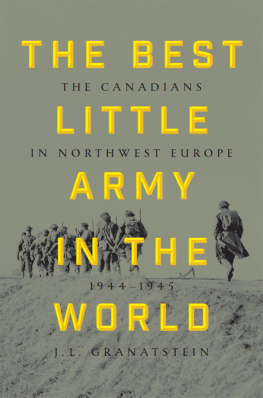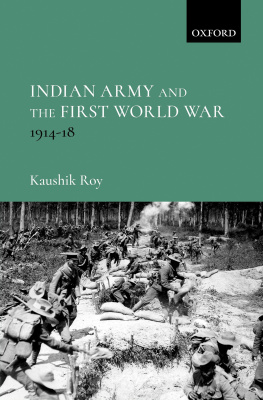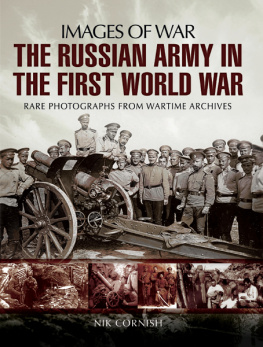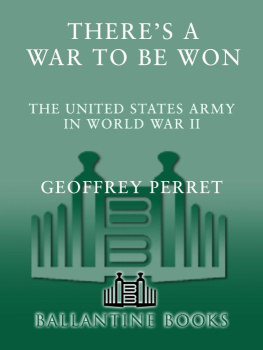

Copyright 2015 Richard Bassett
All rights reserved. This book may not be reproduced in whole or in part, in any form (beyond that copying permitted by Sections 107 and 108 of the U.S. Copyright Law and except by reviewers for the public press) without written permission from the publishers.
For information about this and other Yale University Press publications, please contact:
U.S. Office:
Europe Office:
Typeset in Minion Pro by IDSUK (DataConnection) Ltd
Printed in Great Britain by TJ International Ltd, Padstow, Cornwall
Library of Congress Cataloging-in-Publication Data
Bassett, Richard.
For God and Kaiser : the Imperial Austrian Army, 16191918/Richard Bassett.
pages cm
Includes bibliographical references and index.
ISBN 978-0-300-17858-6 (cl : alk. paper)
1. Austria. ArmeeHistory. 2. AustriaHistory, Military. I. Title.
UA672.B37 2015
355.0094360903dc 3
2014047021
A catalogue record for this book is available from the British Library.
10 9 8 7 6 5 4 3 2 1
For Gottfried Pils (Akad.Maler)
All the peoples of the monarchy have found a common home in the army. For that reason it has been enabled to accomplish so much.
The Emperor Charles I, 24 October 1918
CONTENTS
ILLUSTRATIONS
Plates
.
Maps
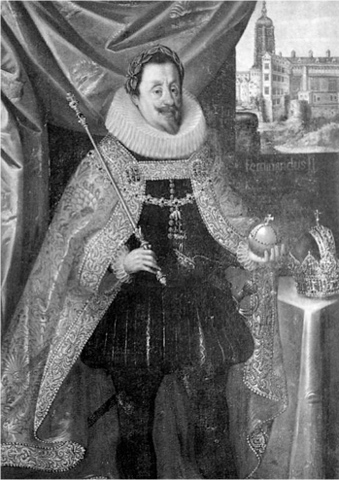
1. Ferdinand II (15781637), scourge of Protestants and devotee of the Jesuits. In the background the Prague castle window from which his representatives were defenestrated, provoking the Thirty Years War.

2. Albrecht Wenzel Eusebius Wallenstein (15831634), Soldier under Saturn revolutionised the logistics of waging war. His failure to comprehend the imperative of unhesitating loyalty to his Habsburg master proved fatal.
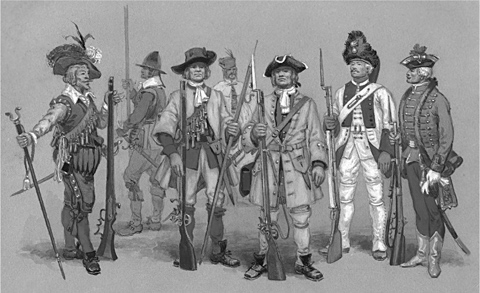
3. Infantry from the era of Wallenstein up to the beginning of Maria Theresas reign, 16001740. The musketeer (third from left) represents a typical soldier defending Vienna during the Siege of 1683.
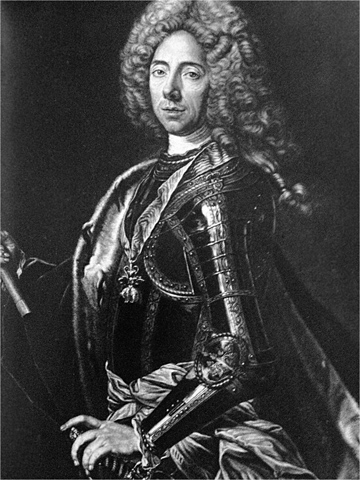
4. Prince Eugene of Savoy (16631736). One of the greatest commanders in European history, his prompt action at Blenheim saved Marlboroughs centre from imminent collapse while his victory at Zenta over the Ottomans laid the foundation of the Austrian Habsburgs expansion into eastern Europe.
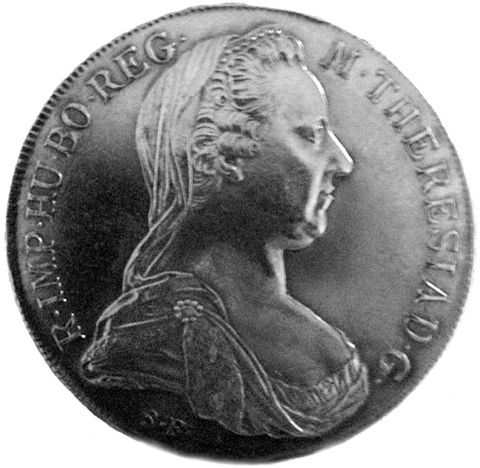
5. The Great Empress: Maria Theresa (17171780). Her reforms have endured in many instances for centuries and she established the Austrian army as one of the most formidable in Europe and more than capable of holding its own against Frederick of Prussia.
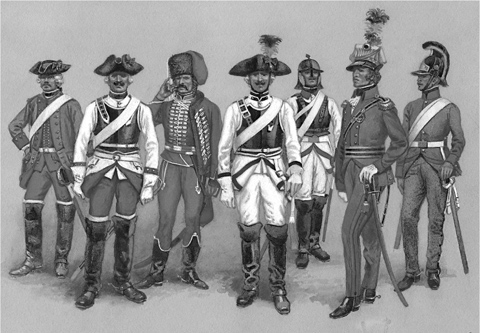
6. The products of Theresian and Josephinian military reforms were seen as the finest cavalry in the world. Austrian dragoons, cuirassiers, chevauxleger and lancers (17601800).
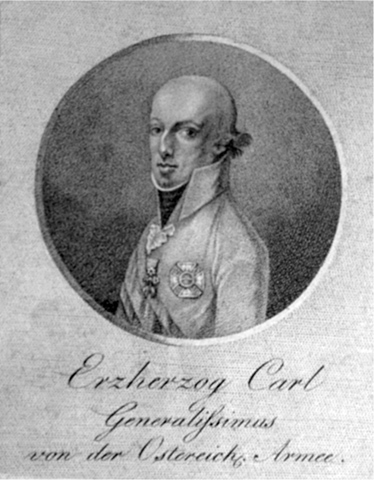
7. The Archduke Charles (17711847), the most formidable of Napoleons opponents and the outstanding Habsburg of his generation. His victory over Napoleon at Aspern electrified Europe. Later when French officers disparaged the Austrians fighting qualities, Napoleon cut them short with the remark : if you did not see the Austrians at Aspern, you have not seen anything!
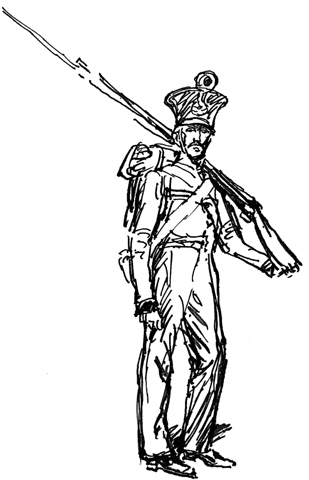
8. As a result of rising costs during the Napoleonic Wars, the imposing crested helmet which the infantry had donned earlier in the century was replaced by a bell-top shako. This headdress however failed to be widely distributed until after the dramatic 1809 campaign had concluded.

9. A detail of the battle of Aspern in Wienerzinn. Austrian flat tin soldiers were originally manufactured during Maria Theresas reign to illustrate her victorious campaigns against Prussia and were used for educational purposes in military academies and cadet schools. These figures date from the 1920s and were made by the Vienna firm of Scheibert. They are painstakingly based on contemporary accounts and engravings of the battle.
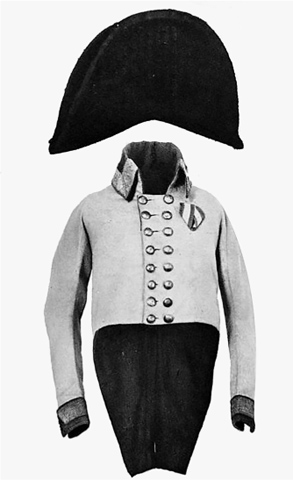
10. The humbling of Napoleon: General Kollers coat and hat in which Napoleon sought to take refuge so as to avoid an angry French mob on the 25 April 1814. The Austrian general happily obliged at the Inn of La Calade. Disguised as an Austrian general Napoleon was then able to proceed across France unmolested.
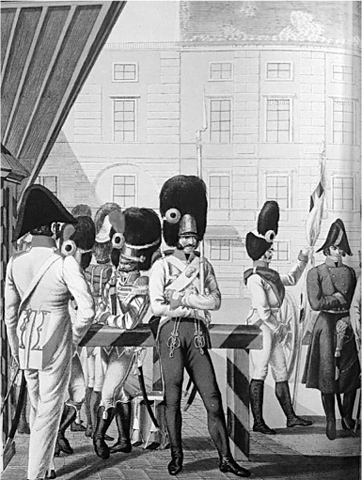
11. Grenadiers of the Vienna House regiment Hoch und Deutschmeister I.R. Nr 4 mounting guard in the Hofburg in 1820. The officer on the right is wearing the traditional top-coat which distinguished officers from other ranks. His pose suggests Enlightenment credentials.
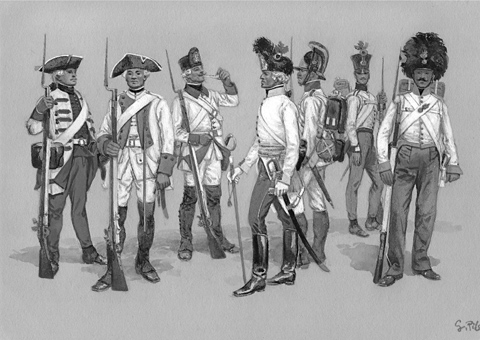
12. Austrian infantry from the end of the Seven Years War to 1840. Grenadier bearskins became progressively more lavish during the final flowering of the Biedermeier era which followed the end of the Napoleonic wars. Together with two colours of button metal, more than 46 different facing colours indicated the identity of each regiment.
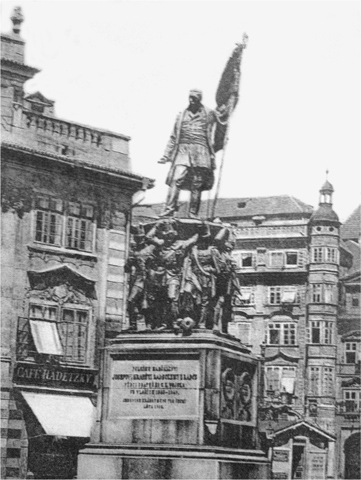
13. Pragues magnificent monument to Joseph Wenzel Radetzky (17661858) shows him carried by his soldiers atop a vast shield fashioned from Italian artillery captured during his 1848 campaign. The monument is expected to be restored to its original site beneath Pragues castle in 2018.

14. Alfred Frst von Windischgrtz (17871862) led the forces which crushed the revolutions in Prague and Vienna in 1848. In Prague he witnessed his wife shot dead by a young insurgent and this experience undoubtedly hardened his attitude towards the rebels. He was instrumental in bringing Franz-Josef to the throne.
Next page


